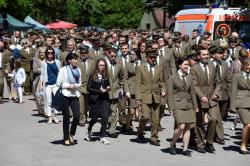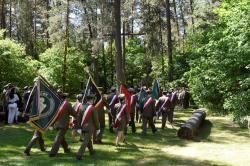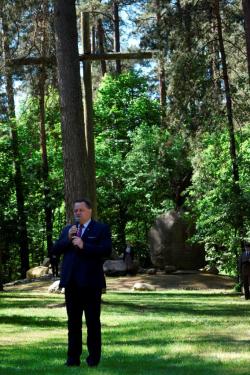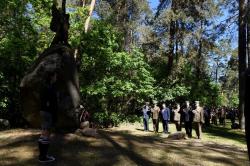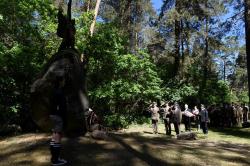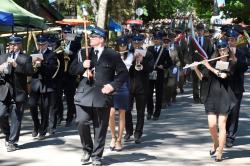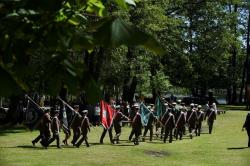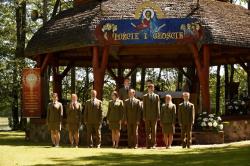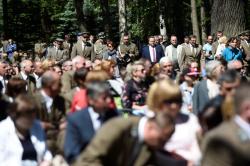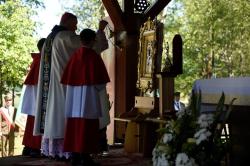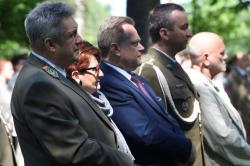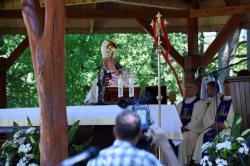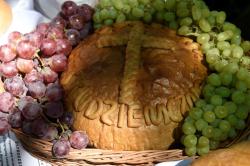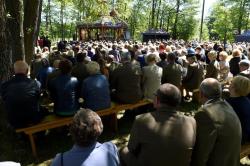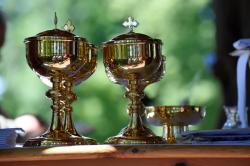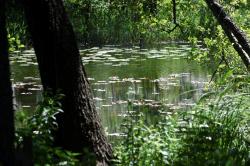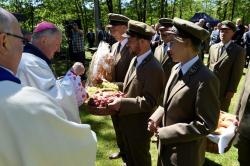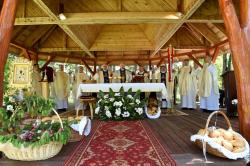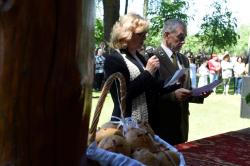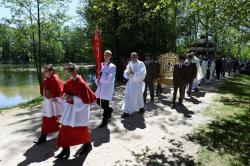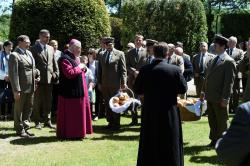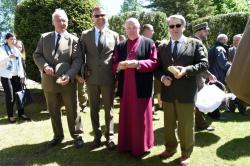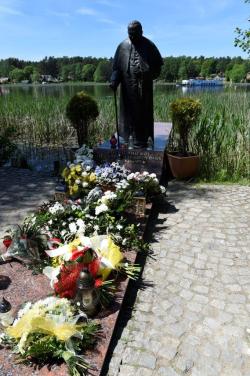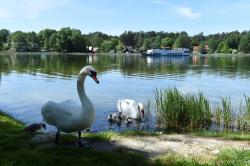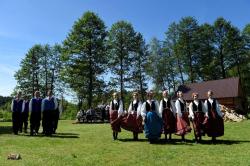 Asset Publisher
Asset Publisher
Polish forests
Poland is in the European lead, while concerning the area of all forests. They cover about 29,2 % of the country territory, and grow within the area of 9,1 million hectares. The overwhelming majority of the forests is state owned, of which almost 7,6 million hectares are managed by the State Forests National Forest Holding..
The number of Polish forest is still growing. The forestation rate of the country has increased from 21 % in 1945 to 29,2 % at the moment. Between 1995 and 2008, the forest area increased by 310 thousand ha. The basis for afforestation works is the "National Programme for Increasing the Forest Cover" (KPZL), assuming an increase of the forestation rate up to 30 % by 2020 and up to 33 % by 2050. Polish forests abound in flora, fauna and fungi. 65 % of the total number of animal species live there.
The forests grow in our country on poor soils, mainly because of the development of the agriculture in previous years. It influences the distribution of the types of the forest sites in Poland. Over 55 % of the forest areas is covered with coniferous forests. In other areas, there are forest sites, mainly the mixed ones. Their small part constitute alder and riparian forests – not more than 3 %.
In the years 1945 – 2011 the area of natural deciduous tree stands within the area of the State Forests National Forest Holding increased from 13 to 28,2 %.
Within the lowlands and uplands the most often occurring tee species is pine. It covers 64,3 % of the forest area of the State Forests National Forest Holding and 57,7 % of private and commune forests. In the mountains the predominant species is European spruce ( in the west) and European spruce with beech (in the east). Domination of pine is the result of carrying on sustainable forest management in the past. Once, the monocultures (crops or cultivations of one species) were the answer to the great demand of industry for wood. Such forests appeared to be quite fragile to climatic factors. They also were often the prey of pests' expansion.
In Polish forests, the share of other tree species, especially deciduous trees have been systematically increasing. The foresters have stepped aside from monocultures – that is why, they try to fit specific species of the forest stand to the natural stand, that would be proper for the given area. Thanks to that, in the years 1945 – 2011, the area of the deciduous tree stands within the lands of the State Forests National Forest Holding increased from 13 to 28,2 %. There occur more and more frequently the following tree species: oaks, ashes, maples, sycamore maples, elms, but also birches, beeches, alders, poplars, hornbeams, aspens, tilias and willows.
Our forests are the most often represented by the forest stands aged 40 to 80 years. The average age of the forest equals 60 years. More and more trees are of big size at the age over 80 years. Since the end of the Second World War, the forests' area has increased up to almost 1,85 million hectares.
Raport o stanie lasów w Polsce 2012
 Asset Publisher
Asset Publisher
XVII Pielgrzymka Leśników i Ich Rodzin do Studzienicznej
XVII Pielgrzymka Leśników i Ich Rodzin do Studzienicznej
W sobotę 3 czerwca leśnicy z terenu RDLP w Białymstoku po raz kolejny pielgrzymowali do Studzienicznej. Powyższa impreza organizowana jest cyklicznie od roku 2000. Scala ono środowisko leśne przez pryzmat wiary i nauczania Jana Pawła II. Pielgrzymka jest również okazją do koleżeńskich spotkań osób pracujących na co dzień w odległych miejscach i różnych instytucjach związanych z lasami.
Powyższa impreza organizowana jest cyklicznie od roku 2000. Scala ono środowisko leśne przez pryzmat wiary i nauczania Jana Pawła II. Pielgrzymka jest również okazją do koleżeńskich spotkań osób pracujących na co dzień w odległych miejscach i różnych instytucjach związanych z lasami.
Uroczystości XVII Pielgrzymki Leśników i Ich Rodzin do Sanktuarium Maryjnego w Studzienicznej oficjalnie rozpoczął przy Pomniku Leśników dyrektor RDLP w Białymstoku – Andrzej Nowak. Następnie do zebranych przemówił minister Jarosław Zieliński, Sekretarz Stanu w MSWiA. Zgodnie z tradycją kapelan leśników i myśliwych Diecezji Ełckiej – ks. prałat Wojciech Kalinowski odmówił modlitwę . Liczne delegacje leśników i przybyłych gości przy akompaniamencie werbli złożyły wieńce i kwiaty pod pomnikiem poległych leśników. Oprawę uroczystości zapewnił Chór Leśników Białowieskich, który odśpiewał m.in. Hymn Leśników Polskich. Kolorytu dodała również Orkiestra Dęta OSP Lipowiec w Augustowie.
Po zakończeniu uroczystości pod pomnikiem zebrani goście prowadzeni przez orkiestra dęta Ochotniczej Straży Pożarnej z Augustowa oraz poczty sztandarowe pod przewodnictwem Adriana Bagnowskiego przeszły pod zorganizowany ołtarz polowy. W sąsiedztwie ołtarza odbyły się krótkie koncerty chóru leśnego oraz występy artystyczne w wykonaniu uczniów Technikum Leśnego w Białowieży. Do liturgii wprowadził kustosz sanktuarium ksiądz kanonik Arkadiusz Pietuszewski. Po modlitwie nastąpiło procesjonalne przeniesienie obrazu Matki Boskiej Studzieniczańskiej do ołtarza polowego przez leśników z Nadleśnictwa Płaska.
Uroczystą mszę świętą rozpoczęto o godzinie 11:30 Przewodniczył jej Jego Ekscelencja ksiądz Biskup Ełcki Romuald Kamiński. W homilii nie zabrakło akcentów leśnych, nawiązujących spraw bieżących. Po mszy świętej pielgrzymi procesjonalnie udali się w kierunku kaplicy na wyspie, gdzie po krótkiej modlitwie złożono kwiaty przed pomnikiem Jana Pawła II. Ostatnim oficjalnym elementem uroczystości było tradycyjnie podzielenie się chlebem, przygotowanym specjalnie na tą okazję.
Ostatnim punktem Pielgrzymki Leśników i Ich Rodzin była wspólna AGAPA w ogrodach proboszczowskich. Czas agapy i towarzyskich spotkań umilała orkiestra Ochotniczej Straży Pożarnej z Lipowca w Augustowie i Zespół Tańca Ludowego „BYSTRY". Chętni mogli również skorzystać z dwóch półgodzinnych rejsów statkiem po jeziorze Studzienicznym.


 fot. Paweł Fabijański
fot. Paweł Fabijański
 fot. Paweł Fabijański
fot. Paweł Fabijański
 fot. Paweł Fabijański
fot. Paweł Fabijański

